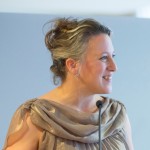
On geese, leadership and disability
- 20 Jun 2014
Jo Verrent lives the principle of the Arts for all Queenslanders strategy that embracing diversity gives us an edge. Australia Council is bringing Jo to Brisbane to talk about disability and leadership at the Queensland Performing Arts Centre on 7 July 2014. Here is a taster:
Resilience and adaptability are key values in leadership. What if I was to tell you that some of the most resilient and adaptable people on this planet are disabled people? We have to be, simply to survive in a world that wasn’t initially designed for us physically or societally. Resilience and adaptability are keystones for most of us – and we’ve honed our skills since the age at which we gained our impairments, many of us from birth or early childhood.
So why don’t we see more disabled leaders in positions of power and influence?
Now that deserves a long and complex response linking issues of access, progression, confidence, labeling, power and many other factors – but a simple, quick answer is because we, as a society, have preconceived ideas of what a leader might be.
For instance, study after study has shown a link between the public perception of leadership and tallness, especially for men. Its not rational, instead its argued its an example of evolutionary preference. Such basic discrimination is an example of unconscious bias – we don’t know we do it but the impact can still be recognized.
In the case of disabled people the bias is usually more overt. Concerns about capability aren’t often linked to the individual; instead they tend to revert back to popular myths and misinformation. ‘Disabled people are always off sick, don’t stay in work long, and are disliked by other team members’. Yet the reality is different. Disabled people statistically take less time of ill than non-disabled people and when they do the process is better managed. Disabled people tend to stay in the same job for longer – many of us prefer to remain geographically in one location once we have our (often complex) support structures in place. And disabled people are often the most popular employees – with both customers and other staff alike.
We hold a very fixed idea of what a leader is and what a leader should do – even though we now have a thousand models showing us that leadership and influence come in many forms. From disabled people we can gain new models and insights – ones that don’t just apply to disabled people, but can inform all.
Take geese. Do you know that by flying in a V formation, a flock of geese can move faster and maintain flight longer than any one goose flying alone. By working together, the flock has a 71% greater flying range. 71% more impact by allowing one bird to lead at a time, for as long as they have the stamina. Some head up the flock for days, some for hours – all dependent on the individual.
This is a way of being that many disabled people know innately. For many of us, fatigue is part of our daily lives, often variable and unpredictable. A leadership model that not only accepts that we can’t all do 24/7 day in and day out provides us all with new ways of thinking and perceiving leadership and influence.
Geese also honk, the ones at the back honk to encourage the bird up front to fly on, to do their best. When we as humans take the lead, what we experience from behind can often be more destructive than supportive of leadership.
What if we were to challenge our conscious and unconscious biases around leadership? What if we were to recognize alternative ways of leading that actually also improve delivery and impact? What if too, we supported those taking on leadership and influence roles rather than tearing them down for who they were and not what they did?
If we did all that, I can pretty much guarantee we’d see more disabled leaders in positions of power and influence.

Jo Verrent is a UK based artist, consultant and producer with disability who specialises in the development of diversity and access. She works in arts and culture at a strategic levels with national agencies and on the ground with organisations and individuals, embedding the belief that diversity adds texture and turning policy into real action. Jo is currently Senior Producer for the UK’s Unlimited Commissions program for disabled artists and companies and has recently delivered projects fusing disabled artistry and digital acumen. The projects focused on intimacy and proximity with atypical dance bodies and examining the interplay between disability and leadership in the cultural sector. Jo is also the co-founder of Sync a training program focused on the interplay between leadership and disability, and is relevant to all leadership providers.
Feature image: Pink Footed Geese by Gidzy https://www.flickr.com/photos/gidzy/

